Introduction
Offshore deepwater is an incredibly difficult environment in which to operate. This article discusses how deep sea mining operations can learn from deepwater drilling.
Heavy industry operations are already difficult and dangerous in an onshore setting. Combinations of hazardous and flammable chemicals; pipes and equipment operating at extremes of pressure and temperature; and heavy lifts, have sadly created numerous instances of damage and loss of life. Offshore operations add further complexity to these operational hazards; particularly around seastate and weather, remoteness, compactness of plant and subsequent inaccessibilty of equipment, and long durations spent offshore by personnel.
Deep Sea Mining is a relatively nascent industry in terms of offshore operations, and whilst there have been some successful test operations, there is not yet a clear blueprint for how to safely, effectively and efficiently run these operations. This article builds upon expertise running deepwater operations in the oil and gas industry, as this is currently the closest analogous industry.
Background
I spent years working offshore on deepwater drillships, running offshore drilling operations, and subsequently managing operations from the office.
Although this experience wasn't directly operating a deep sea mining production support vessel, the operations (and challenges) were very similar to those that are encountered in deep sea mining of the CCZ or in other offshore settings.

Discoverer 534
D534 at anchorage at Kepper Fels shipyard
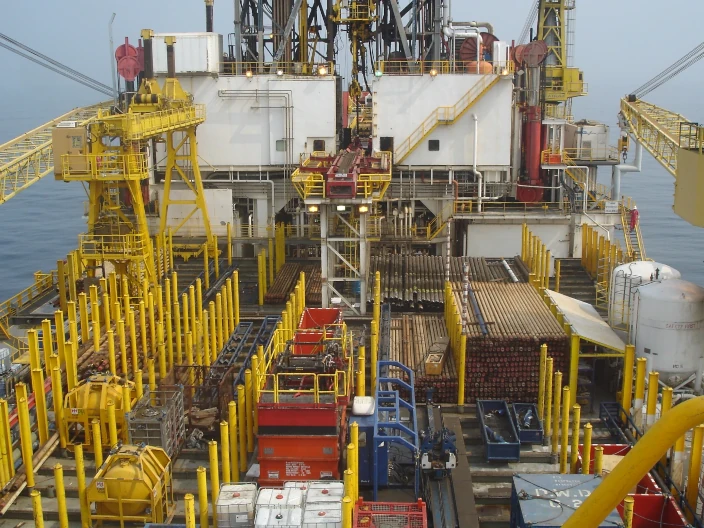
Crammed Deck
The aft deck of DWD, crammed with equipment
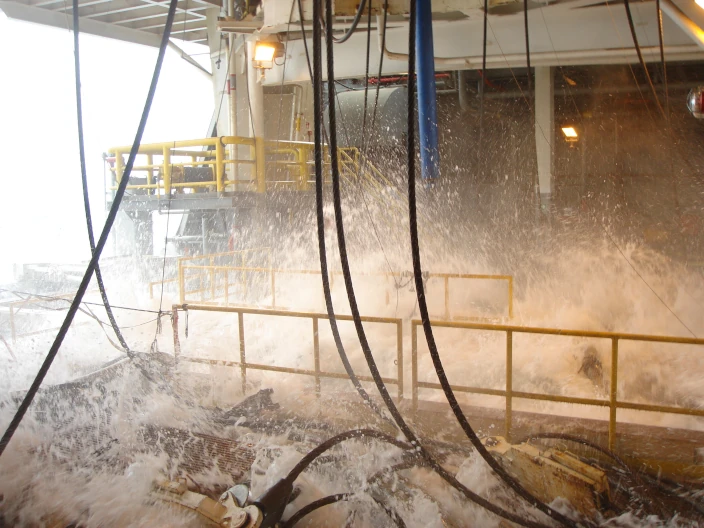
Storm Damage
A tropical storm ripped through equipment in the moonpool of D534

DeepWater Pathfinder
Travelling by helicopter to DWP in offshore Nigeria

Tight Quarters
Deck operations are always challenging due to limited space and heavy equipment
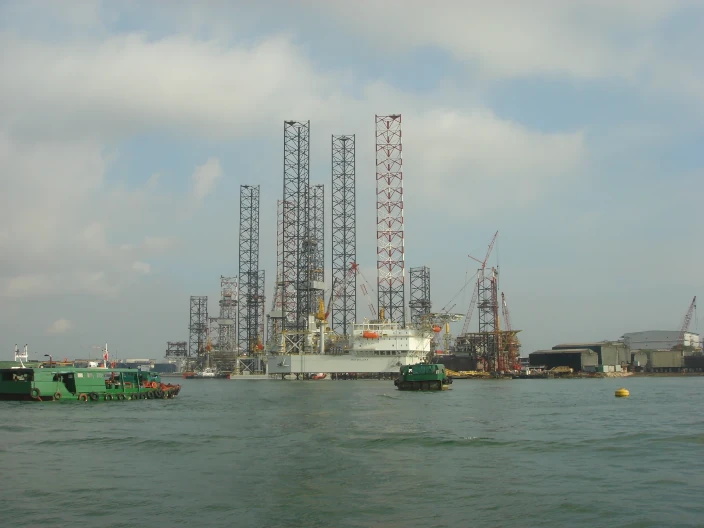
Rigs in Kepper Fels
Jackup rigs undergo maintenance and refit in Kepper Fels shipyard in Singapore
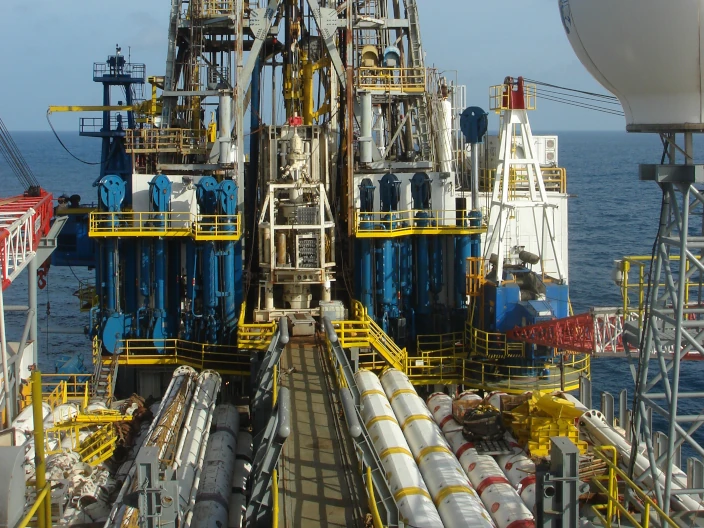
Crammed Deck
The riser deck of Deepwater Pathfinder. Note the density of equipment.
Previous
Next
I worked on the Deepwater Pathfinder and Deepwater Discovery deepwater drillships in offshore Nigeria; refitted the Discoverer 534 in Kepper Fels (Singapore) shipyard; drilled the first offshore exploration well in deepwater Pakistan; then ran operations on the Deepwater Expedition in offshore Egypt.
Specific Challenges
The very fact of operating in deepwater (that is, typically, beyond the continental shelf) introduces a host of issues and challenges. In particular, the remoteness, operating on a floating vessel exposed to weather and seastates, and operating equipment in confined and cramped settings that would otherwise be spread out of acres of land.
- Remoteness: Deepwater operations typically take place 100+km away from the shore, and so this brings a host of logistics issues. Helicopters typically take an hour or more to access the location, whilst it may take supply ships 1-3 days to sail to the location.
- Weather: Locations in the Gulf of Guinea, Pacific Ocean and North Sea are particularly susceptible to storms, severe weather and high seas. Waves in excess of 3m in height are not unusual. This increases the risk to personnel, complicates the operations of equipment, and can make operations impossible.
- Duration Offshore: Remoteness of operations mean that frequent crew-changes are impossible. Offshore oil and gas workes typically work a 4-on / 4-off schedule, of 4 weeks working and 4 weeks vacation. Work shifts whilst "on" are 12 hours a day, 7 days a week, for 4 weeks straight. Consequently there is a high risk of fatigue, stress and breakdown.
- Compactness: Although deepwater drillship are huge (typically built on Samsung Heavy Industries 100,000MT oil carrier hulls) they become extremely cramped when large amounts of equipment are installed. D534 suffered from a top-drive that collided with the pipehandler, whilst DWE's history as an icebreaker meant that moving equipment around was nigh impossible. This creates tremendous problems of inaccessibility for maintenance or when issues occur.
Similarities between Deep Sea Mining and Deepwater Drilling
Deep sea mining operations are very different to deepwater drilling, but they share large number of commonalities, including:
- Modified Deepwater Drillships: The Hidden Gem and Olympia are both modified deepwater drillships
- Weather: Offshore operations are highly exposed to tropical storms, rough seas and extremes of weather
- Remote Operations: Both operations occur a significant distance from the shore and bases of operation. They require long offshore supply chains in terms of boats and helicopters
- Industrial Risks: There are similar risks around lifting and maneouvering heavy equipment, pipes and plant operating under pressure, and use of chemicals
- Requires Strong Safety Culture: A strong, inclusive safety culture is required in order to run efficient and safe operations in both deepwater drilling and deep sea mining
That said, there are some major differences:
- Continual versus Changing Ops: Drilling operations tend to cycle through 2-8 day phases of drilling, running casing, cementing etc. - conversely, deep sea mining is a more continual operation
- No Hydrocarbons: Deep sea mining operations are not subject to the risk of oil and gas explosions or fires
- Fewer Specialist Contractors: Deepwater drilling typically requires the coordination of 10-15 different companies of contractors; who typically provide drilling support, specialist measuring tools, drilling fluids and cementing services. Conversely, deep sea mining operations currently typically only involve 1-3 different contrators
Operational Priorities
The objective of any deepwater operations is to carry out the required operations with zero harm to human lives, with as little environmental impact as can possibly be achieved, whilst operating as efficiently as possible. Typically these 3 objectives align when operations are run properly:
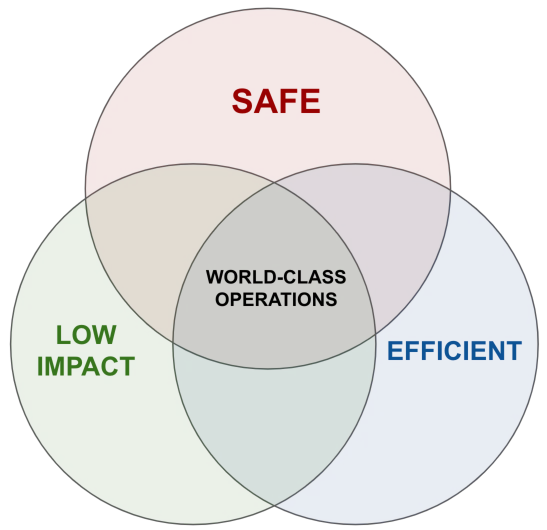
In order to achieve this, the operations team needs to achieve the following:
- Building a strong, inclusive safety culture
- Managing efficient and robust logistics
- Driving incremental up-time improvements